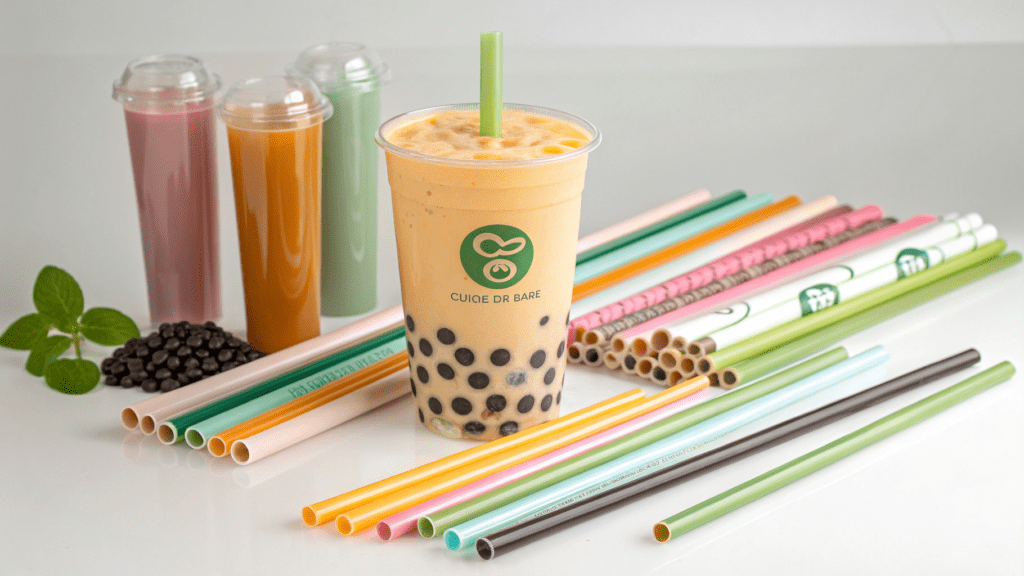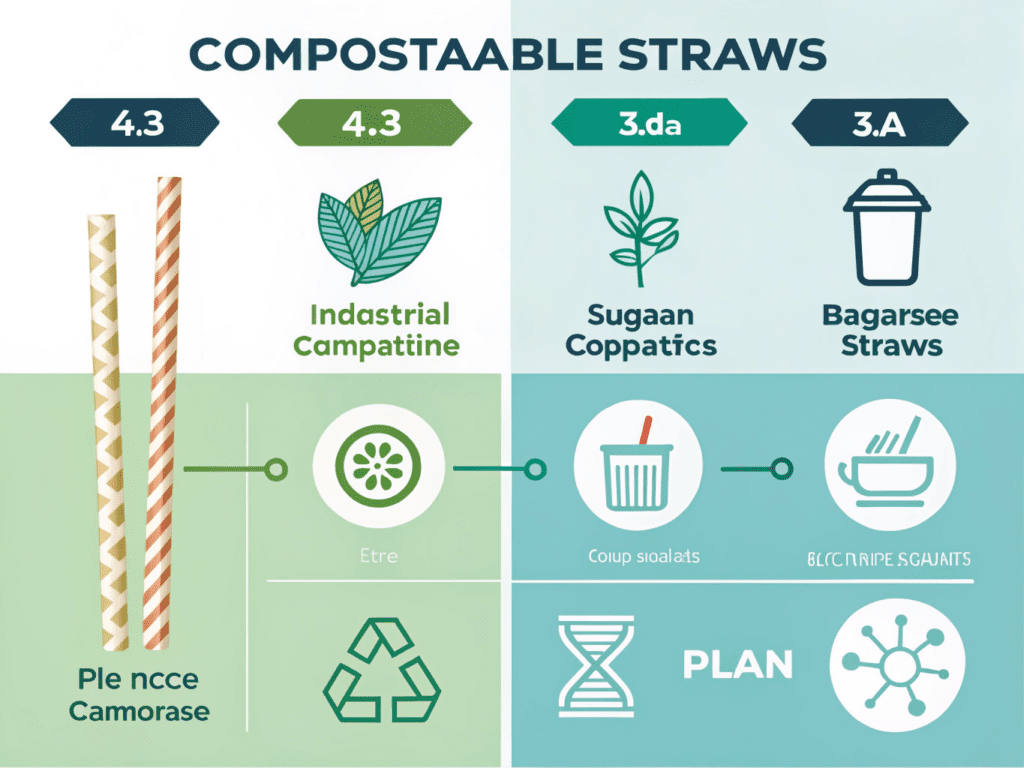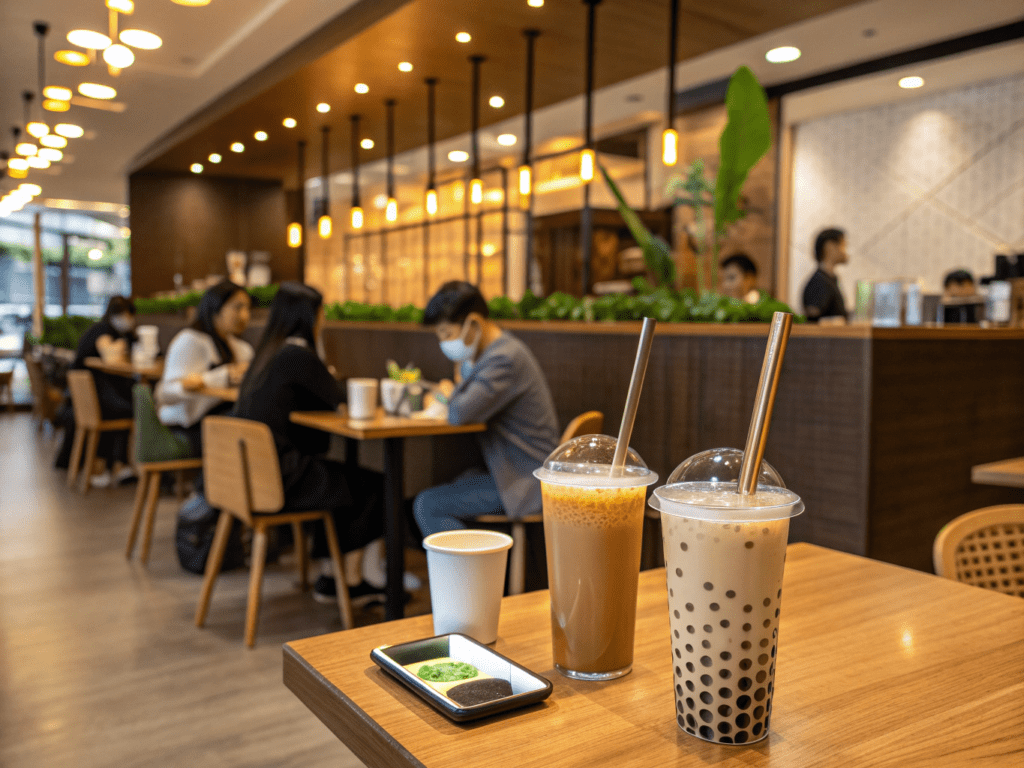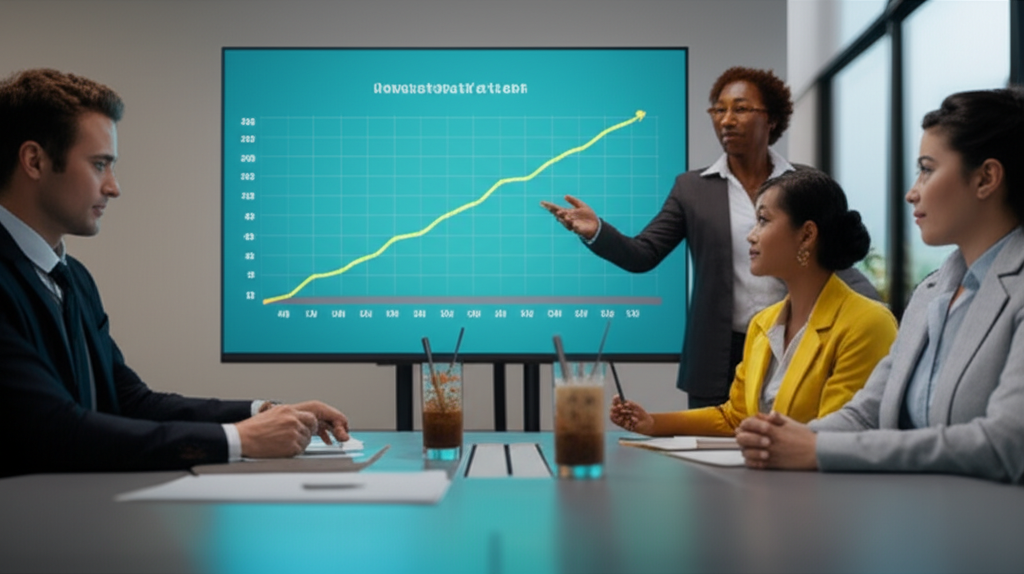
The global bubble tea phenomenon, projected to reachUSD 6.50 billion by 2032 with a robust 9% Compound Annual Growth Rate (CAGR), continues its upward trajectory, creating a unique and escalating demand for specialized straws. For procurement managers, operations directors, sustainability officers, and supply chain executives, the question of “What are bubble tea straws made of?” has transcended simple material composition to become a critical strategic imperative.
Historically, the primary function of a bubble tea straw was to effectively manage the beverage’s signature tapioca pearls, requiring a substantial10-15mm diameterfor seamless sipping. However, the unchecked proliferation of single-use plastics, coupled with escalating environmental awareness and stringent regulatory pressures, is fundamentally transforming the material landscape. Businesses today face the complex challenge of balancing operational efficiency and cost-effectiveness with the imperative to adopt eco-conscious solutions, or risk significant commercial and reputational repercussions.
Source: Grand View Research (2023), Allied Market Research (2022), Fortune Business Insights (2023).
Embracing sustainable bubble tea straws is crucial for hospitality to avoid risks and seize market opportunities.
Traditional Bubble Tea Straws: Understanding Their Environmental Footprint

For decades,polyethylene (PE) or polypropylene (PP) plasticserved as the industry’s default, cost-effective choices forbubble tea straws. Their durability and ease of manufacturing made them ubiquitous. Yet, this convenience has come at a severe environmental cost. The sheer volume of waste generated is staggering: an estimated500 million straws are discarded daily in the U.S. alone, contributing significantly to the global plastic pollution crisis. These plastic waste products can persist in landfills and natural environments for hundreds of years, slowly breaking down into harmful microplastics that permeate ecosystems.
The inherent design of widerplastic bubble tea straws, essential for the beverage’s unique consistency, exacerbates this waste volume. Often individually wrapped in additional plastic, they contribute to an alarming multi-layered packaging footprint. While technically recyclable, many plastic straws arenot accepted by all recycling facilities due to their small size and specific shape, hindering effective waste management and diverting vast quantities to landfills or, worse, into our oceans. This poses a direct threat to marine life and demands immediate action from B2B decision-makers.
Traditional plastic bubble tea straws pose significant environmental risks and operational challenges for businesses.
Pioneering Sustainable Bubble Tea Straws: Innovations in Materials

In stark contrast to the unsustainable legacy of traditional plastics, the market for eco-friendly straws is experiencing an unprecedented boom, with some segments anticipating aCAGR exceeding 22% by 2031. This explosive growth is driven by a confluence of evolving consumer values, corporate sustainability mandates, and a rapidly tightening regulatory environment. Businesses are increasingly adopting materials that meet stringent international compostability standards such asASTM D6400 and EN13432to align with environmental mandates forsustainable bubble tea straws. Beyond compliance, the proactive adoption of these innovations allows businesses to significantly enhance their brand image, attract a growing segment of environmentally conscious consumers, and differentiate themselves in a crowded market. Crucially, these new materials are designed to address the performance issues that plagued early paper alternatives, such as sogginess, ensuring a premium customer experience.
Compostable Bubble Tea Straws: Biodegradable Solutions for Modern Operations
The shift towards compostable solutions represents a significant leap forward, offering single-use functionality with a drastically reduced environmental impact.
- PLA (Polylactic Acid) straws, derived from renewable resources like corn starch, represent a popular biodegradable option. While they offer a plant-based alternative to traditional plastics, it’s vital to note that PLA typically requires industrial composting facilities to break down effectively. Regulations in regions like France, under the AGEC law, highlight the nuances of PLA’s environmental performance, sometimes restricting its use due to these decomposition limitations outside of specialized infrastructure.
- Tea Fibre straws, a pioneering innovation, leverage a byproduct of Taiwan’s expansive tea industry. These straws are 100% compostable, demonstrating a truly circular economy model by repurposing agricultural waste. Research indicates they fully decompose in 4-6 weeks under composting conditions, a remarkable acceleration compared to other alternatives. Taipec, a leading supplier, has championed these high-performance, durable straws that maintain integrity in liquid.
- Sugarcane fiber straws, crafted from bagasse (the fibrous residue left after sugarcane juice extraction), are celebrated for their robustness and home-compostable properties. They are certified compostable by leading bodies such as BPI, DIN CERTCO, and CMA, ensuring adherence to stringent environmental standards. These straws offer excellent customer experience due to their durability and lack of impact on taste.
- Plant fiber straws, often made from recycled agricultural crop waste, plant gum, and starch, offer a unique combination of durability and flexibility, mimicking the tactile experience of traditional plastic without the environmental burden. They meet rigorous standards like ASTM D6400, making them a reliable choice for eco-conscious operations. Greenmunch is a notable supplier in this space.
- PHA (Polyhydroxyalkanoates) straws represent a cutting-edge bioplastic derived from renewable plant sources. A key advantage of PHA is its full compostability in home compost, industrial facilities, and even marine environments, showcasing superior biodegradability.
- Rice straws, made with vegetable flour, are another home-compostable option that breaks down naturally within a few days, providing a robust solution for tapioca pearls.
Reusable Bubble Tea Straws: Durability and Long-Term Value
For businesses and consumers committed to minimizing waste through repeated use, reusable options offer long-term value and a premium brand perception.
- Stainless steel straws, such as those offered by Steelys® Straws, are highly durable, dishwasher-safe, and resistant to microbial buildup. Their robust construction and sleek appearance make them a popular choice for long-term investment.
- Bamboo straws provide a lightweight, organic, and rapidly renewable alternative. Their natural aesthetic and ability to withstand various temperatures make them a favored choice, with companies like Boba Guys incorporating them into their sustainability initiatives.
- Silicone straws offer flexibility and portability, making them convenient for on-the-go consumption. However, their pliable nature often means they cannot easily puncture sealed film lids, necessitating pre-made cup holes or alternative lid designs. Boba Tribe offers popular silicone boba straws.
- Paille vè deliver a pure taste experience and an elegant aesthetic appeal, allowing the vibrant colors of bubble tea to shine through. However, they are typically more fragile than metal or some plastic alternatives, which can impact their suitability for high-volume or fast-paced operational environments.
For a wholesale solution that aligns with these sustainable materials, consider exploring options athttps://momoio.com/sustainable-boba-drinking-straws-b2b/.
Innovative materials offer diverse sustainable bubble tea straw solutions for modern B2B operations.
Comparison Table: Bubble Tea Straw Material Evaluation

| Patikilarite | B2B enpak operasyonèl | Remak Konfòmite | ROI potansyèl |
|---|---|---|---|
| Plastic (PP) | Low initial cost, easy piercing; recycling often problematic. | Increasingly banned (e.g.,UK’s 2020 Plastic Straws Regulationsfor single-use). | Low initial cost; high long-term environmental liability and potential fines. |
| Papye | Readily available, but can get soggy, impacting customer satisfaction. | Generally compostable/biodegradable; however, check forPFAS concernsand true biodegradability in typical landfill conditions. | Lower sustainability score; potential for increased waste if quality is poor; risk of brand damage. |
| PLA | Requires industrial composting infrastructure; good pierceability for film lids. | Compostable (e.g.,ASTM D6400 certified), but sometimes banned (e.g., France’s AGEC law) due to decomposition limitations outside industrial facilities. | Reduced environmental footprint; good for eco-conscious branding; dependent on local composting infrastructure. |
| Kann | Durable, home-compostable; excellent customer experience due to sturdiness. | BPI, DIN CERTCO, CMA certified; adheres to stringent environmental laws; highly compliant. | High sustainability ROI; enhanced brand reputation; appeals to eco-aware consumers. |
| Nerjaveèi asye | Requires cleaning protocols and initial investment in cleaning equipment. | Reusable, meets food-safe standards (e.g., FDA-approved). Significantly reduces single-use waste. | High long-term savings on disposables; premium brand perception; attracts eco-conscious customers. |
| Tea Fiber | Durable, maintains integrity in liquid; excellent pierceability for sealed lids. | 100% compostable(e.g., Taipec); contributes to a circular economy model. | High environmental and brand value; potential for premium pricing; strong market differentiation. |
Choosing the right bubble tea straw material balances operational impact, compliance, and ROI.
Navigating the Regulatory Landscape and Market Dynamics for Bubble Tea Straws
The global bubble tea market’s projected growth fromUSD 3.96 billion in 2025 to USD 9.72 billion by 2035fuels an undeniable demand for innovativebubble tea strawssolutions. This growth occurs within a broader context where theeco-friendly packaging market is forecasted to reach USD 498.29 billionat a7.6% CAGR, demonstrating an undeniable global shift towards sustainable disposables. Savvy suppliers are responding to this demand by offering flexible bulk purchasing options and customization services, which are crucial for high-volume bubble tea operations seeking to maintain brand consistency and operational efficiency. Furthermore, continuous innovation in materials like PHA and advanced sugarcane straws offers significant competitive advantages through enhanced performance, superior durability, and improved environmental profiles foreco-friendly bubble tea straws.
Global Plastic Bans and Their Impact on Bubble Tea Operations
The transition away from traditional plastic straws is not merely a preference; it is increasingly a legal mandate. Stringent government regulations, such asSan Francisco’s comprehensive plastic straw ban, directly threaten businesses that continue to rely on conventional plastic options. Non-compliance can lead to severeoperational penalties and significant brand damage, as evidenced by the proactive measures seen in municipalities likeFredericton, which plans to include bubble tea straws in its future plastic bans. TheEU Single-Use Plastics Directive, enacted to combat marine litter and plastic pollution, is a landmark example of how major economies are accelerating the shift away from conventional plastics. Beyond government mandates, industry giants likeStarbucks and McDonald’sare setting aggressive internal targets for100% recyclable, reusable, or compostable packaging by 2025-2030, setting a clear precedent for their extensive supply chains.
Challenges and Barriers to Adopting Sustainable Bubble Tea Straws
Despite the clear imperative for sustainability, the path to widespread adoption of sustainable bubble tea straws is not without its hurdles. One of the most significant barriers for food service businesses is theperceived higher costof compostable and reusable alternatives compared to cheap, traditional plastic. This initial investment can deter smaller operators.
Beyond cost,functionality issuespersist as a major concern. Early generations ofpaper straws becoming soggyor somecompostable bubble tea strawsfailing to adequately pierce the sealed lids common in the industry directly impact customer satisfaction and operational efficiency, sometimes requiring manual lid pre-punching. A major systemic hurdle is thelimited industrial composting infrastructurein many regions, which undermines the effective decomposition of bio-compostable materials like PLA, diverting them to landfills where they may not break down as intended.
Furthermore, widespread“product greenwashing”– where products are marketed as environmentally friendly without genuine sustainability credentials – creates confusion among businesses and consumers, leading tolow compliance ratesand hindering effective transitions to truly sustainable solutions. Finally, critical accessibility concerns exist for individuals with disabilities who may rely on the flexibility and specific properties of traditional plastic straws, posing a complex challenge for blanket bans.
Businesses looking for reliable wholesale options that meet current sustainability standards can find more information athttps://momoio.com/b2b-sustainable-boba-straws-wholesale/.
Navigating regulations and overcoming adoption barriers are key to sustainable bubble tea straw integration.
Case Study: Boba Guys’ Sustainable Straw Journey in a Regulated Market
The journey towards sustainable bubble tea straws is exemplified by the proactive steps taken by innovative brands. Faced withSan Francisco’s pioneering plastic straw ban, popular bubble tea chain Boba Guys demonstrated strategic foresight by swiftly sourcing the firstpolylactic acid (PLA) bubble tea straws in the U.S.This decision was a direct response to regulatory pressure and a commitment to environmental responsibility.
The chosen PLA material, derived fromcorn starch, was a crucial factor as it was accepted bySan Francisco’s composting program, directly aligning with local environmental regulations. This transition not only addressed the immediate environmental concern posed by single-use plastics but also provided a functional alternative for their widebubble tea straws, crucial for the brand’s core offering. Boba Guys’ experience, however, also highlighted the dual necessity for robustsupply chainsto ensure consistent availability of new materials and comprehensiveconsumer educationcampaigns regarding the proper disposal of these innovative sustainable solutions. This real-world example underscores the strategic importance of adaptability and collaboration in navigating evolving environmental mandates.
Boba Guys’ case highlights successful adaptation to plastic bans through strategic sustainable straw sourcing.

The Future Outlook for Bubble Tea Straws: Innovation and Market Imperatives
The trajectory forbubble tea strawsover the next 5-10 years is unequivocally defined by continued innovation and an unyielding commitment to sustainability. Thebio-based biodegradable plastics market is projected to reach USD 15.6 billion by 2035, growing at a9.5% CAGR, indicating a sustained surge in material science advancements that will directly impact the availability and performance ofsustainable bubble tea straws.
Expect significantadvances in paper straw production, creating even more durable, naturally decomposing options that finally address the long-standing performance issues of past iterations. Breakthroughs in material science are being accelerated by technology;AI is increasingly aiding in identifying and testing new biodegradable and compostable materialsmore rapidly, shortening R&D cycles foreco-friendly bubble tea straws.
Beyond material innovation, the market will be shaped by shifting corporate priorities and consumer demands. Aggressiveobjektif dirabilite antreprizfrom global brands, coupled with increasing consumer demand forESG-aligned suppliers, will drive widespread adoption of these advanced materials. The broadercompostable packaging marketis forecasted to grow fromUSD 112.49 billion in 2025 to USD 232.47 billion by 2034 (8.4% CAGR), providing a robust ecosystem for sustainable straw development. Furthermore, theglobal biodegradable disposable tableware marketis poised for a7.6% CAGR from 2023 to 2030, with compostable goods expected to hold asignificant 57% share of the zero-waste packaging market by 2025. These projections solidify the imperative for businesses to invest in future-proof straw solutions.
For a comprehensive range of sustainable and eco-friendly options for your business, explore the offerings athttps://momoio.com/sustainable-bubble-tea-straws-b2b-wholesale/.
The future of bubble tea straws is driven by innovation, AI, and strong market demand for sustainability.
Competitive Advantage & Business Case: Why Sustainability is Non-Negotiable
For B2B decision-makers, embracing sustainable bubble tea straws is not merely about environmental compliance; it’s a strategic move that delivers quantifiable competitive advantages and a compelling business case.
- Quantified Cost Savings: While initial costs for sustainable alternatives might seem higher, a holistic view reveals significant long-term savings. Reduced waste disposal fees, avoidance of penalties from non-compliance with plastic bans, and potential tax incentives for green businesses can dramatically offset upfront investments. For instance, reusable straws, despite their initial capital outlay, eliminate recurring procurement costs for disposables.
- Risk Mitigation: Proactive adoption of certified sustainable straws insulates your business from the escalating risks associated with plastic pollution. This includes mitigating the risk of operational penalties from stricter regulations (e.g., EU Single-Use Plastics Directive) and safeguarding against irreversible brand damage from negative consumer sentiment or activist campaigns targeting plastic waste. Compliance is no longer a burden but a shield.
- Brand Value Uplift: In today’s market, consumers are increasingly prioritizing brands that demonstrate genuine environmental responsibility. Offering certified sustainable bubble tea straws significantly enhances your brand’s reputation, attracting a growing segment of eco-conscious customers. This translates into increased customer loyalty, positive word-of-mouth, and a stronger market position. Brands perceived as leaders in sustainability often command premium pricing and enjoy greater resilience in volatile markets.
- Market Share Opportunity: By differentiating your offering with superior, compliant, and environmentally responsible packaging, you can capture market share from competitors lagging in sustainability. This strategic positioning allows you to align with the evolving demands of both consumers and B2B partners who increasingly prioritize ESG (Environmental, Social, and Governance) factors in their procurement decisions.
This is an opportune moment for procurement managers, operations directors, sustainability officers, and supply chain executives to lead the charge. The market is evolving, and those who adapt swiftly will reap the rewards of enhanced brand equity, reduced operational risks, and a stronger competitive stance.
Sustainable bubble tea straws offer significant competitive advantages and a strong business case.
Kesyon yo poze souvan
Why should hospitality businesses switch to sustainable bubble tea straws?
Switching to sustainable bubble tea straws helps hospitality businesses comply with growing plastic bans, enhances brand reputation among eco-conscious consumers, and mitigates risks of fines and negative publicity, ensuring long-term operational viability.
Are compostable bubble tea straws truly biodegradable in a typical hospitality setting?
While many compostable straws (like PLA) require industrial composting facilities, materials like sugarcane fiber and rice straws are home-compostable, breaking down naturally within days or weeks, making them ideal for diverse hospitality waste streams.
How do sustainable bubble tea straws impact the customer experience?
Modern sustainable bubble tea straws, especially those made from sugarcane or tea fiber, are designed for durability and maintain integrity, ensuring a premium sipping experience without sogginess or taste alteration, enhancing customer satisfaction.
What are the main types of sustainable bubble tea straws available for B2B procurement?
B2B options include compostable straws (PLA, sugarcane, tea fiber, PHA, rice) and reusable straws (stainless steel, bamboo, silicone, glass), each offering distinct benefits for various operational needs.
How can procurement managers ensure a consistent supply of sustainable bubble tea straws?
Procurement managers should partner with reputable suppliers offering flexible bulk purchasing, customization, and robust supply chains for sustainable materials like sugarcane or tea fiber to ensure consistent availability.
Conclusion: Driving Sustainable Procurement in the Bubble Tea Industry
The landscape forbubble tea strawsis rapidly evolving, moving decisively towards sustainability. From traditional plastics to innovative compostable and reusable solutions, the industry is responding to both stringent regulations and heightened consumer demand for eco-conscious practices. Businesses that prioritize high-performance, certifiedsustainable bubble tea strawsnot only ensure regulatory compliance but also unlock significant brand value and operational efficiencies.
Act now to elevate your brand’s sustainability profile and secure your supply chain with certified, high-performance sustainable bubble tea straws.Contact us today to request a consultation and discover tailored solutions for your business.






